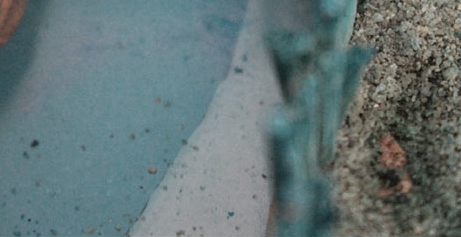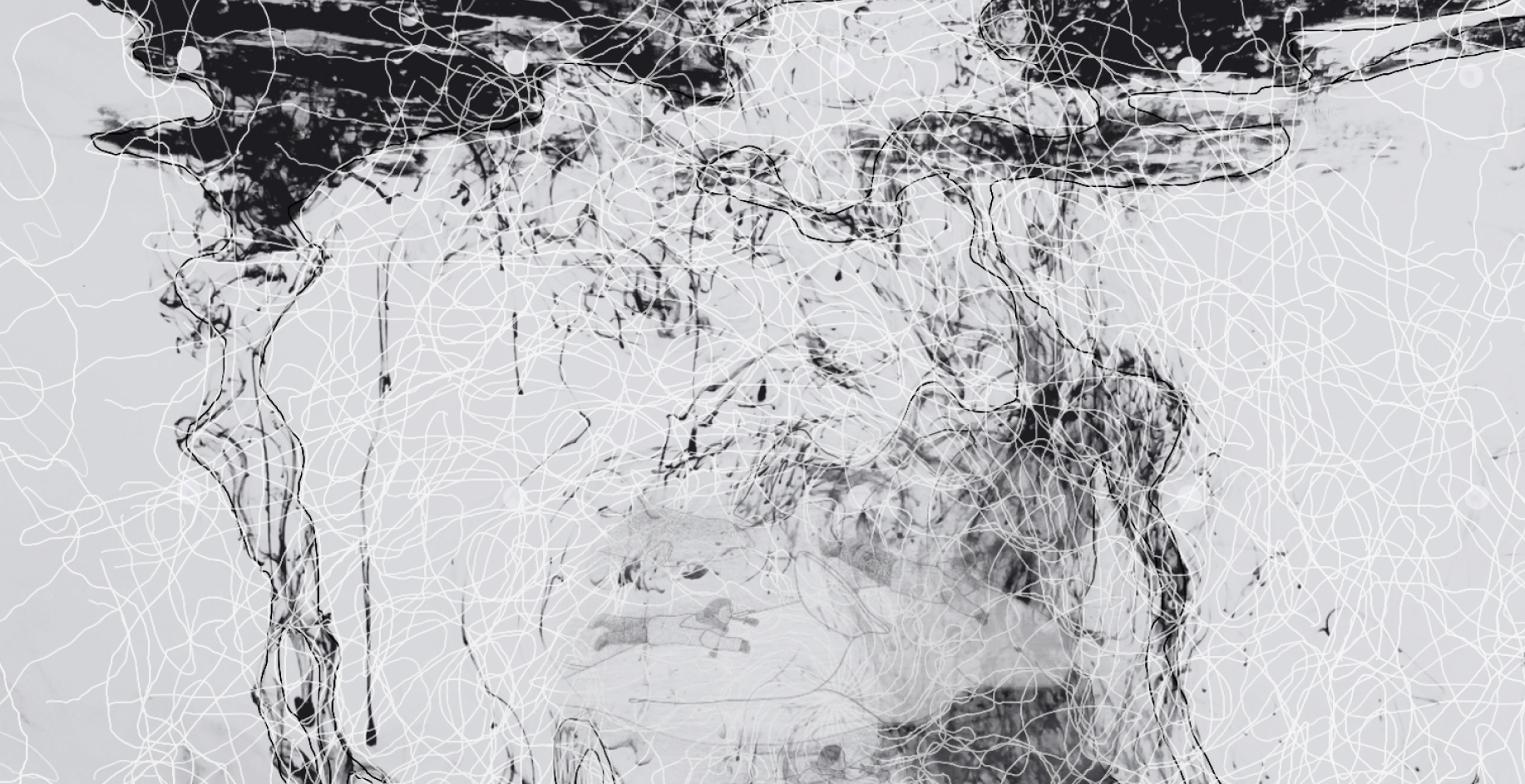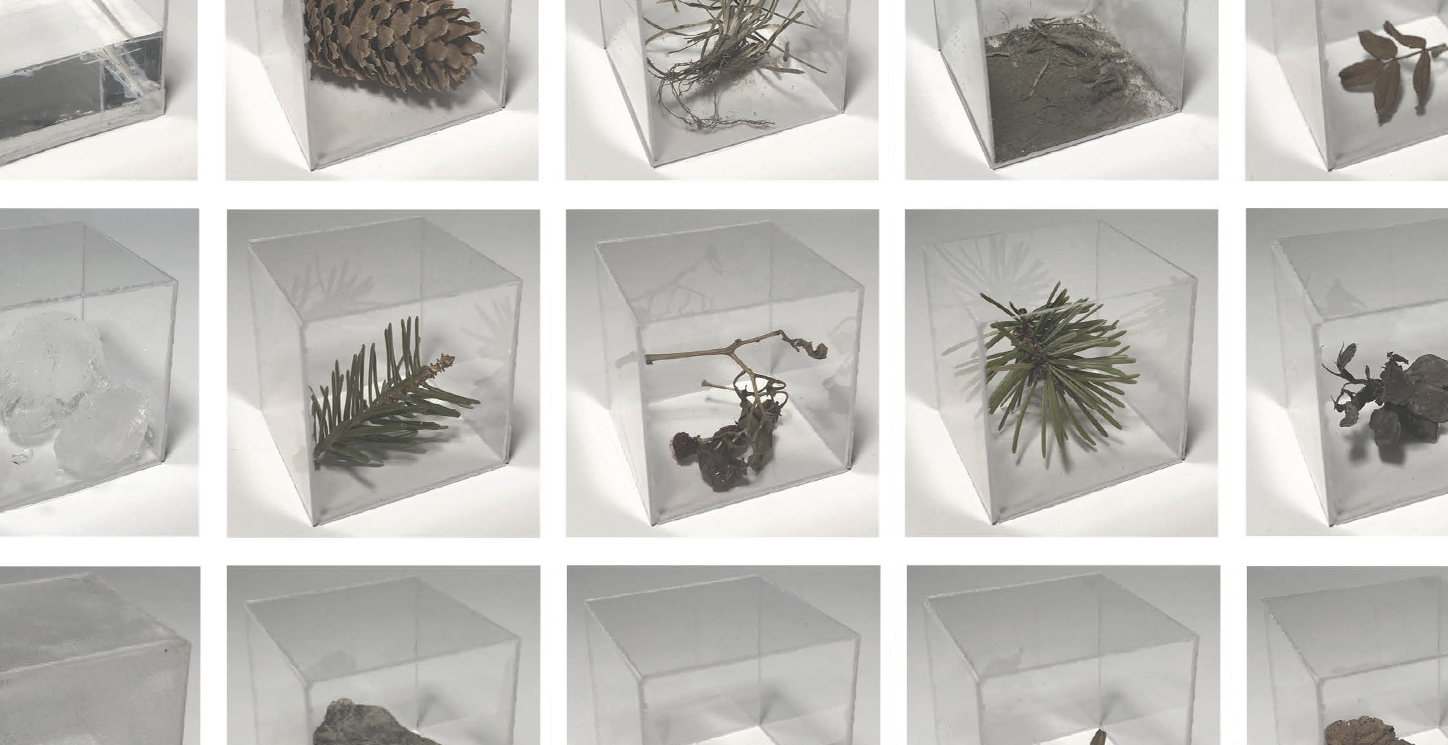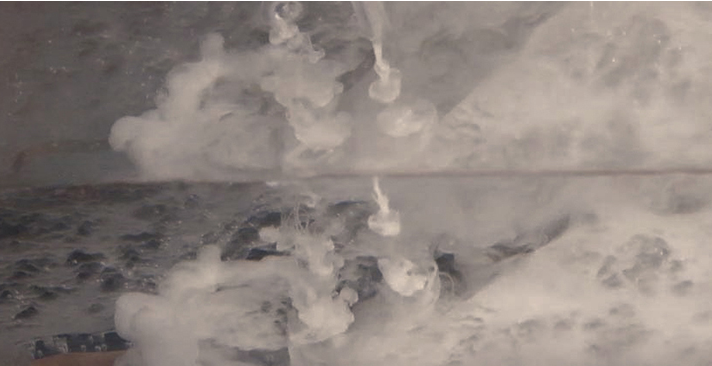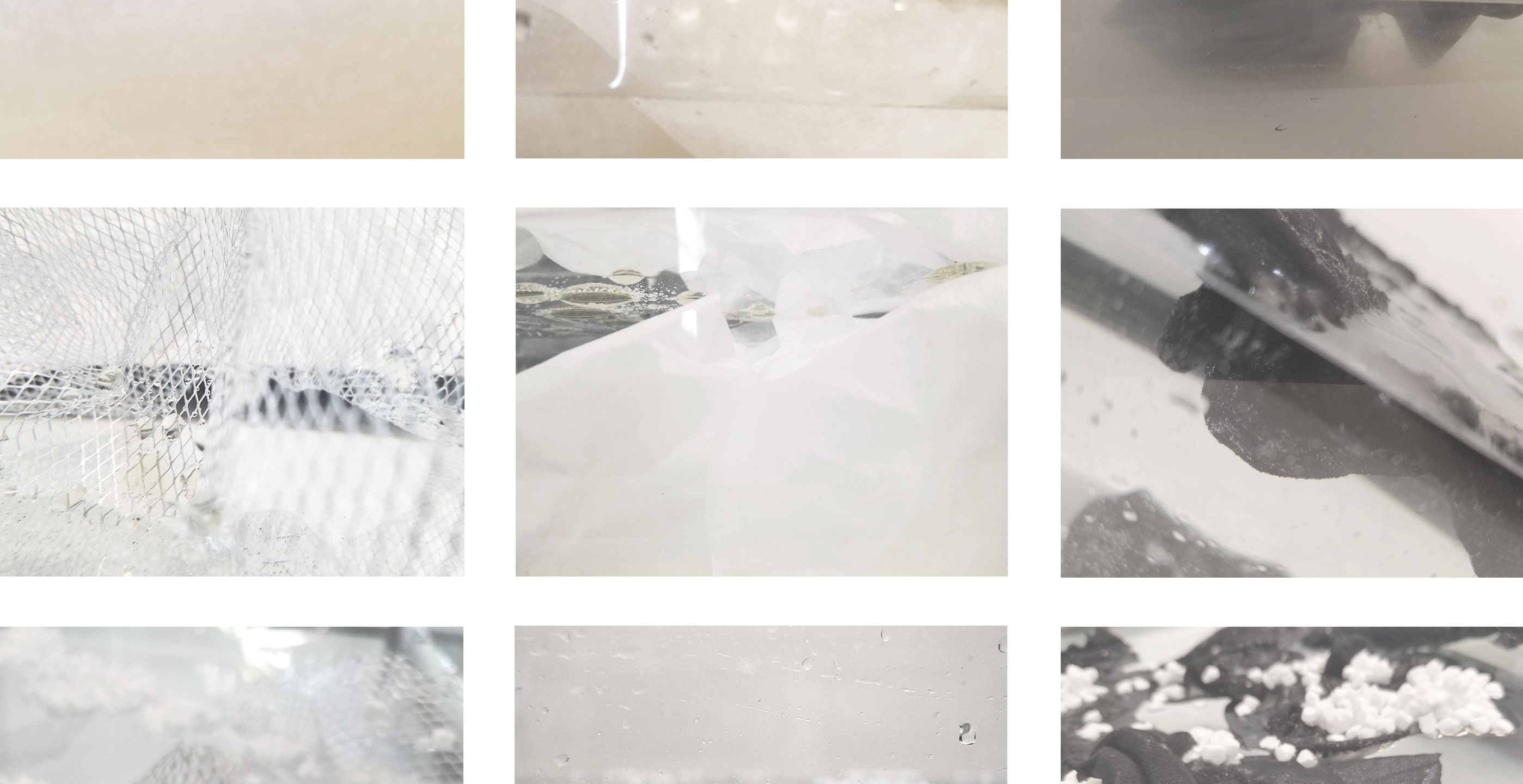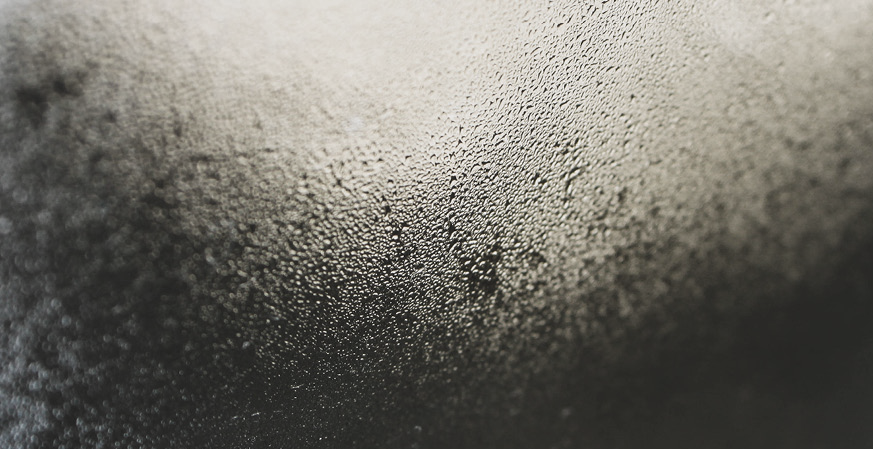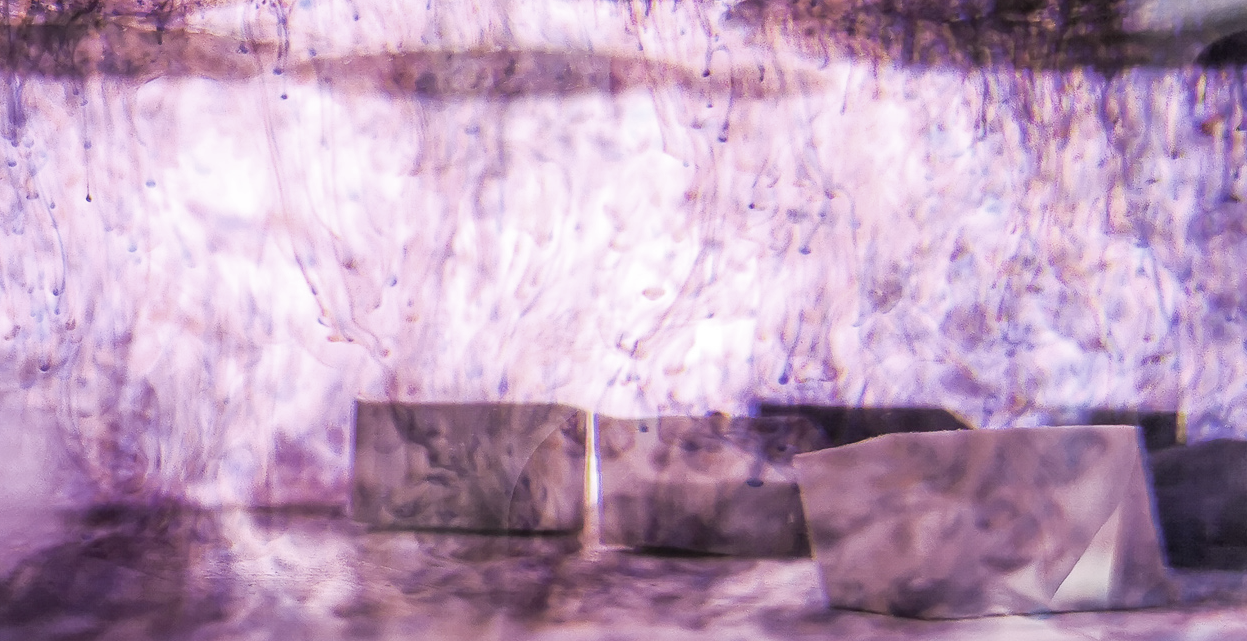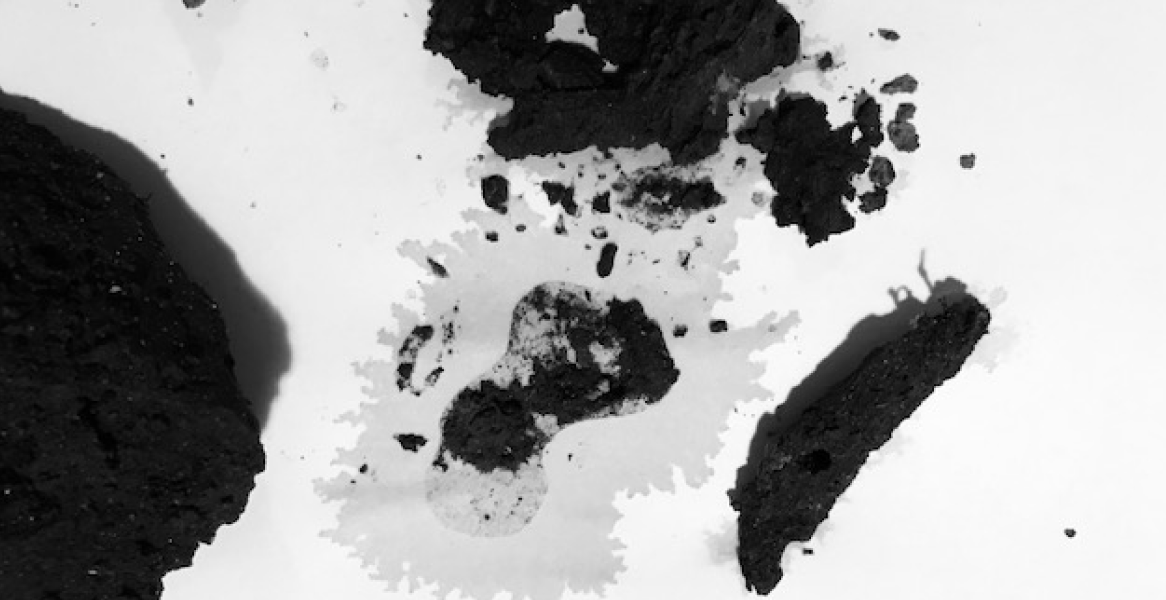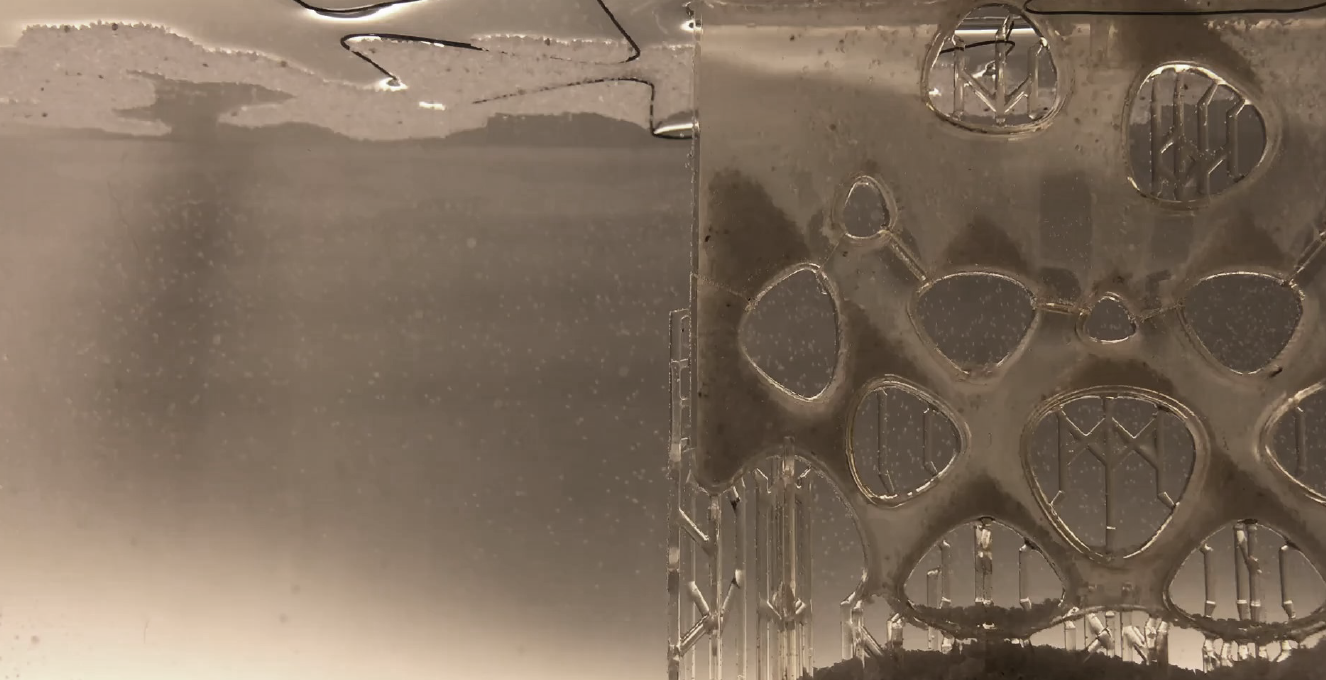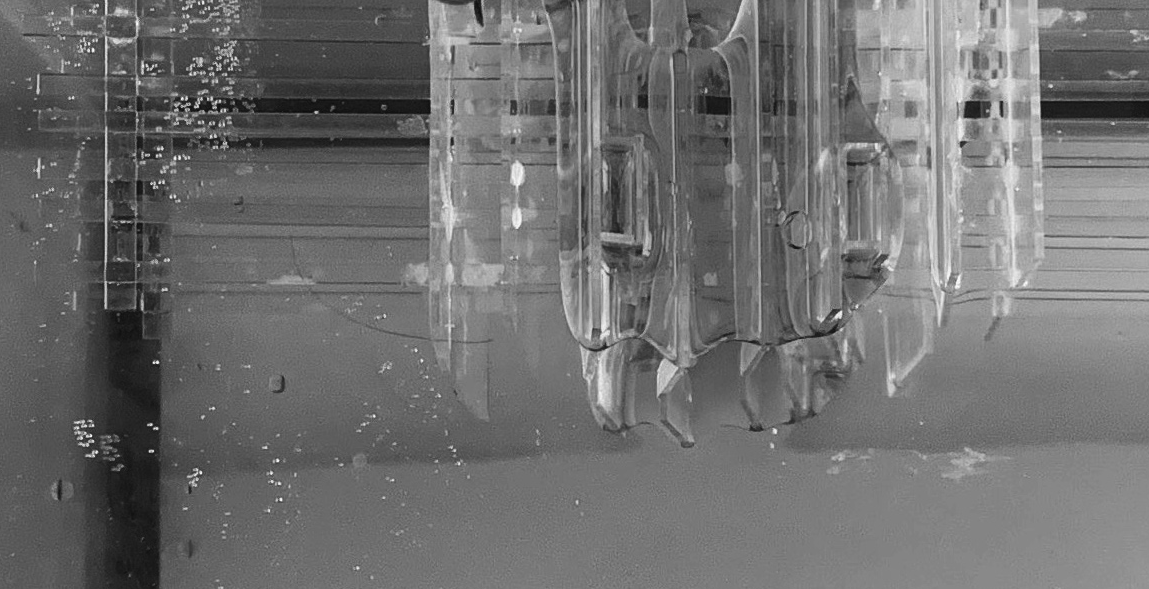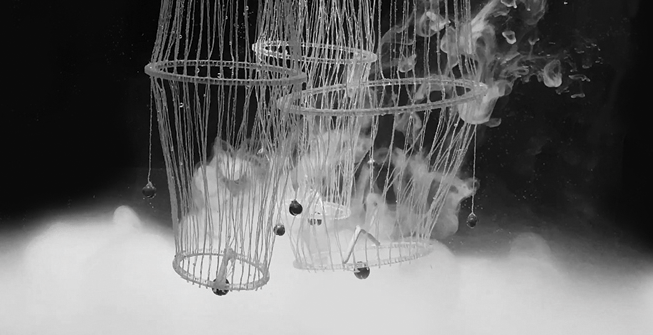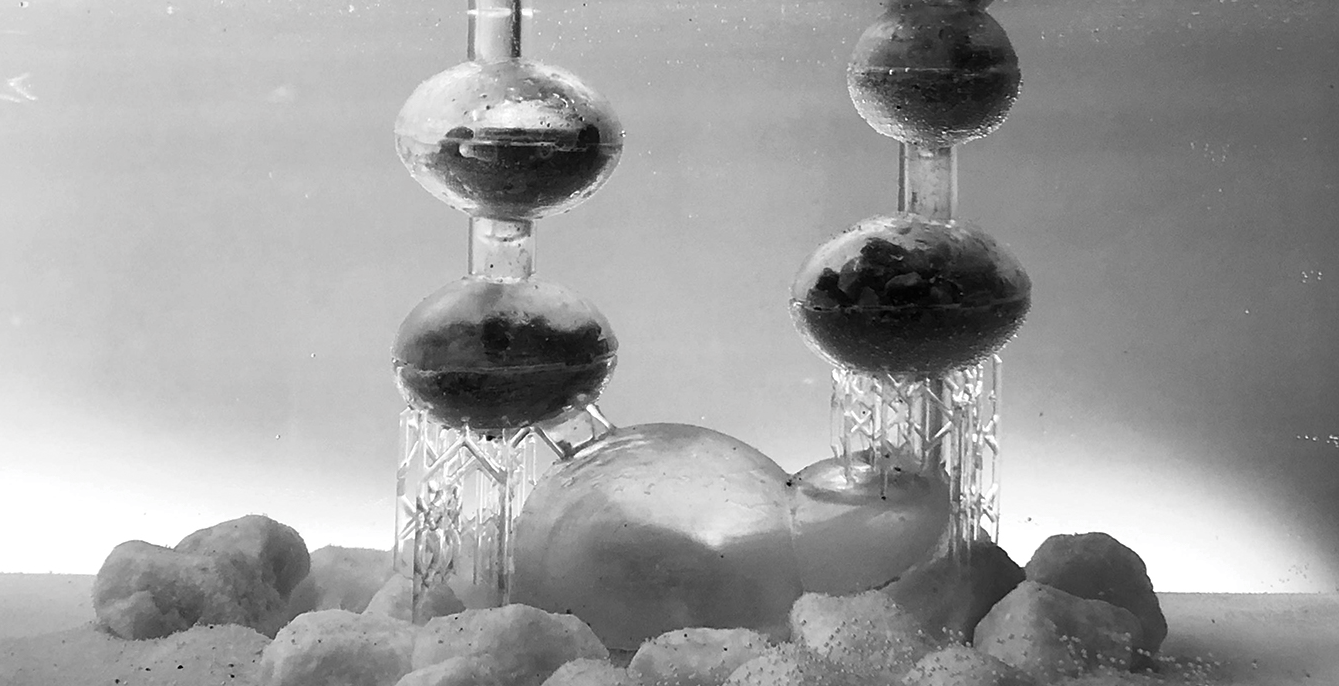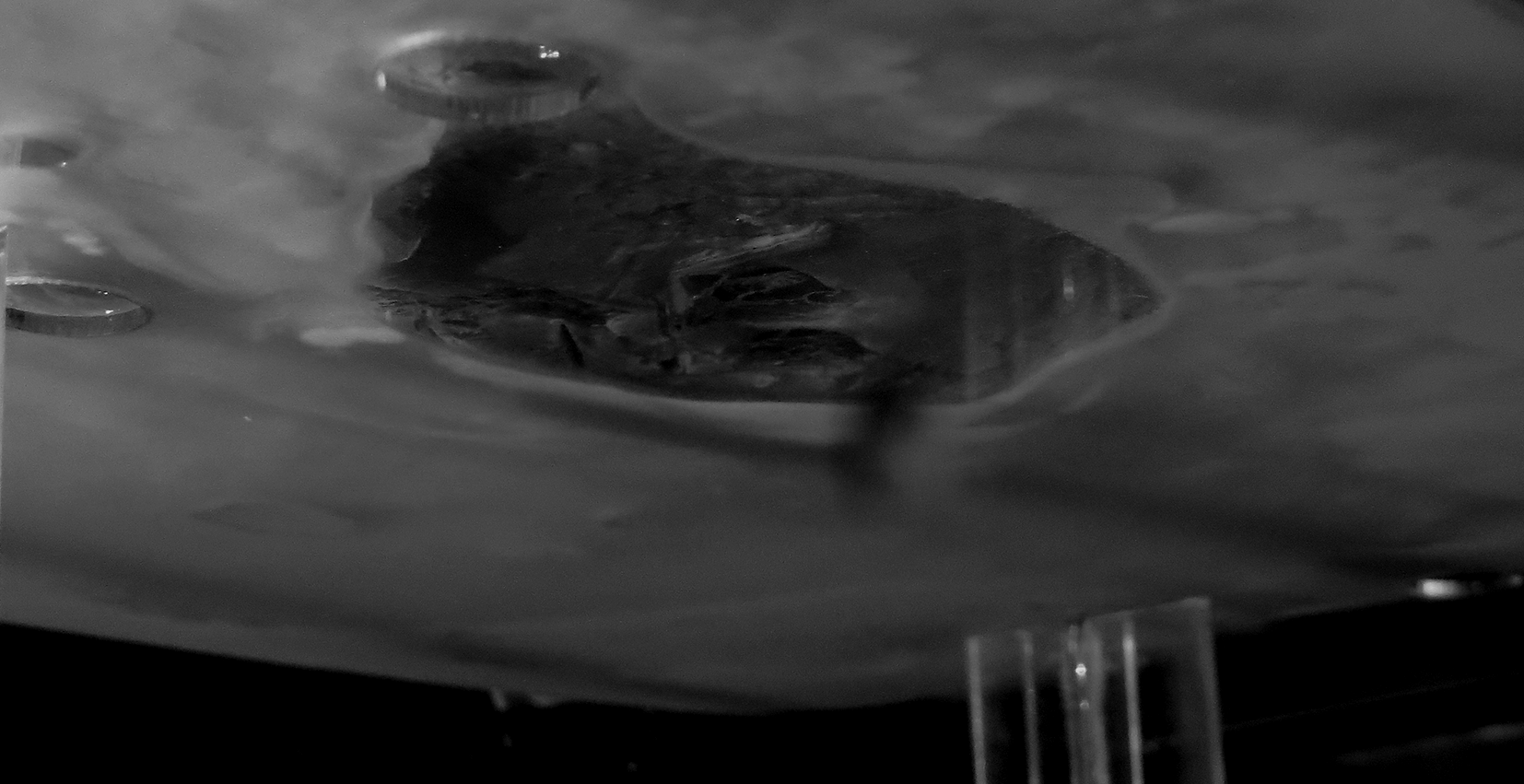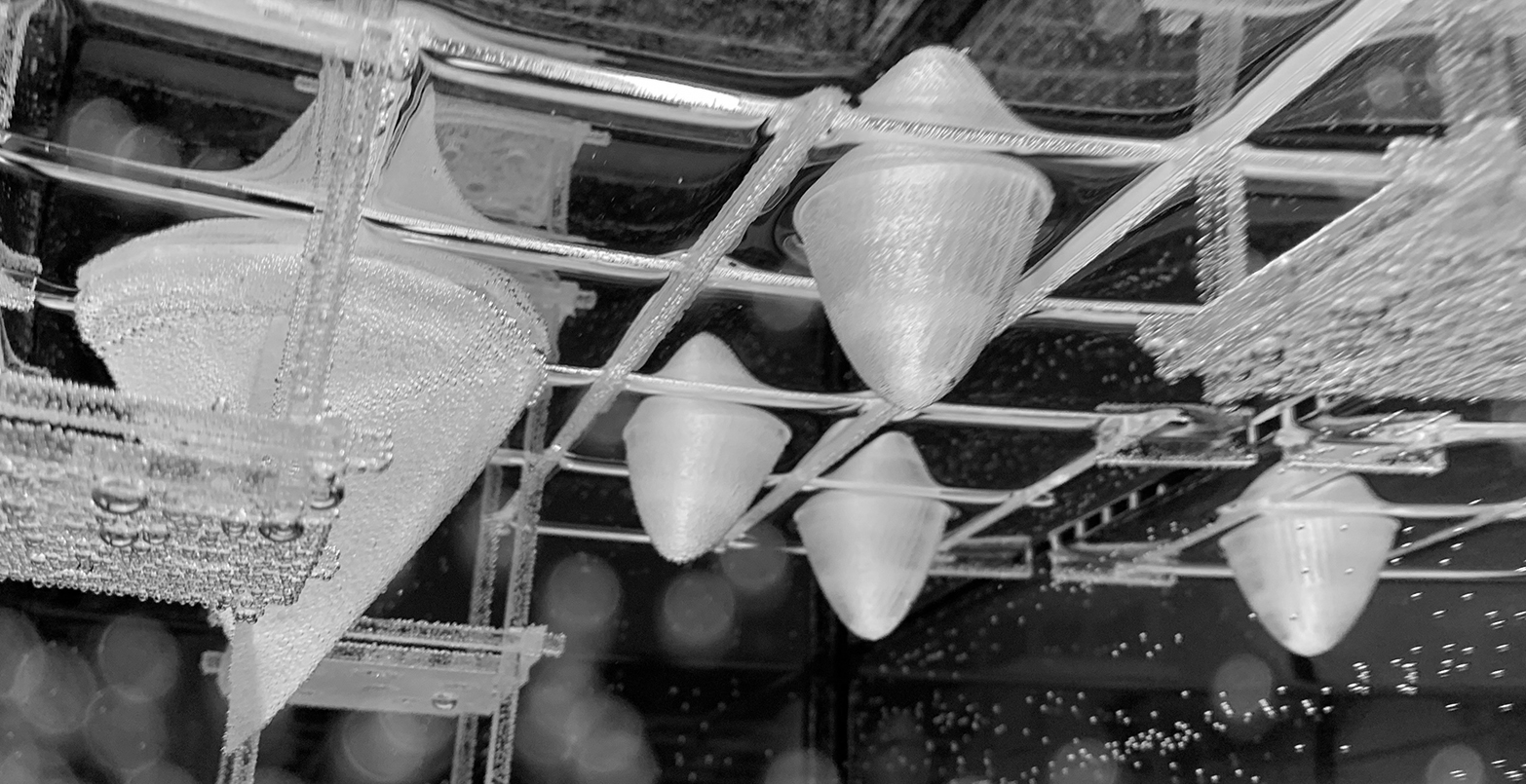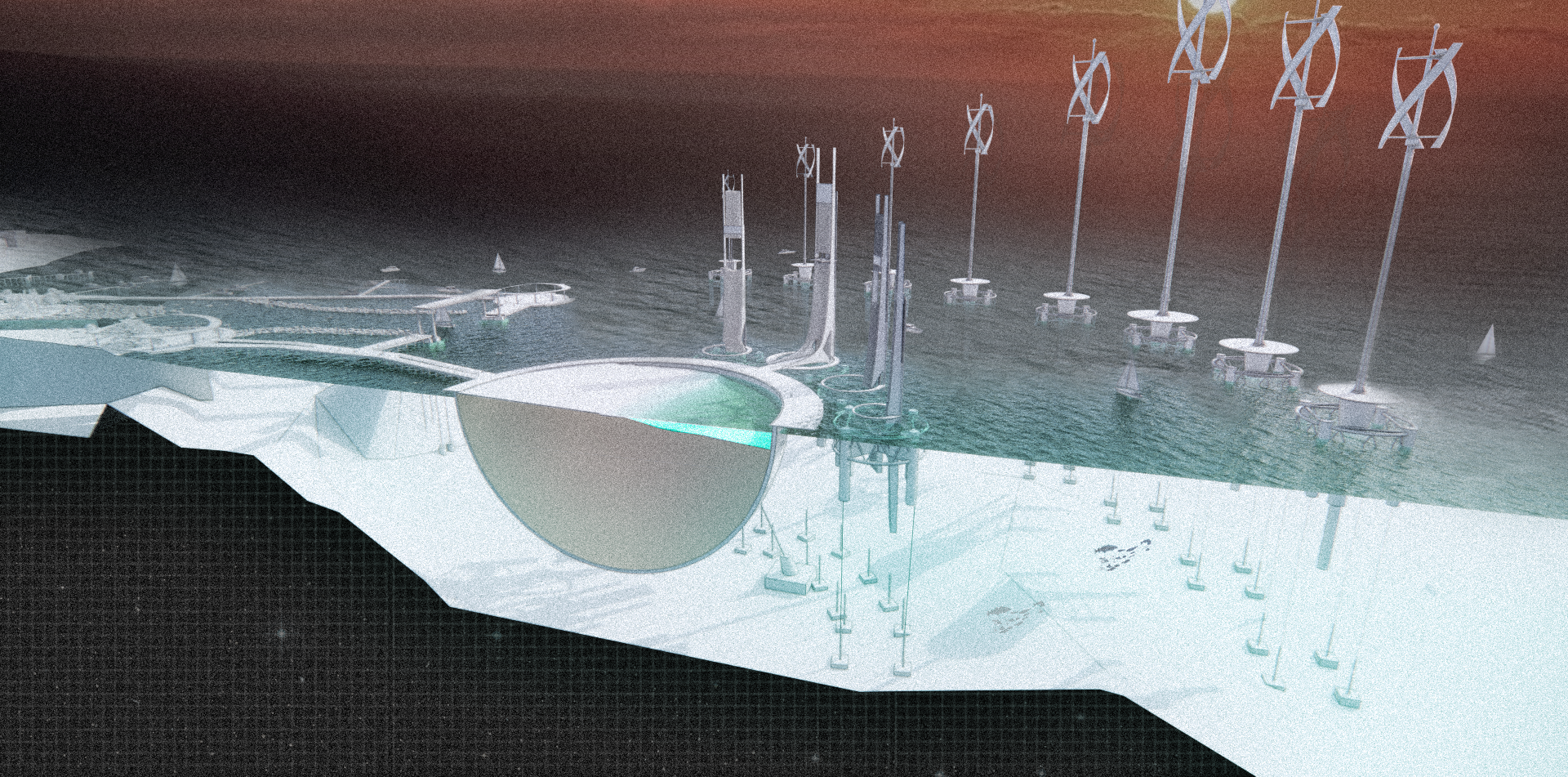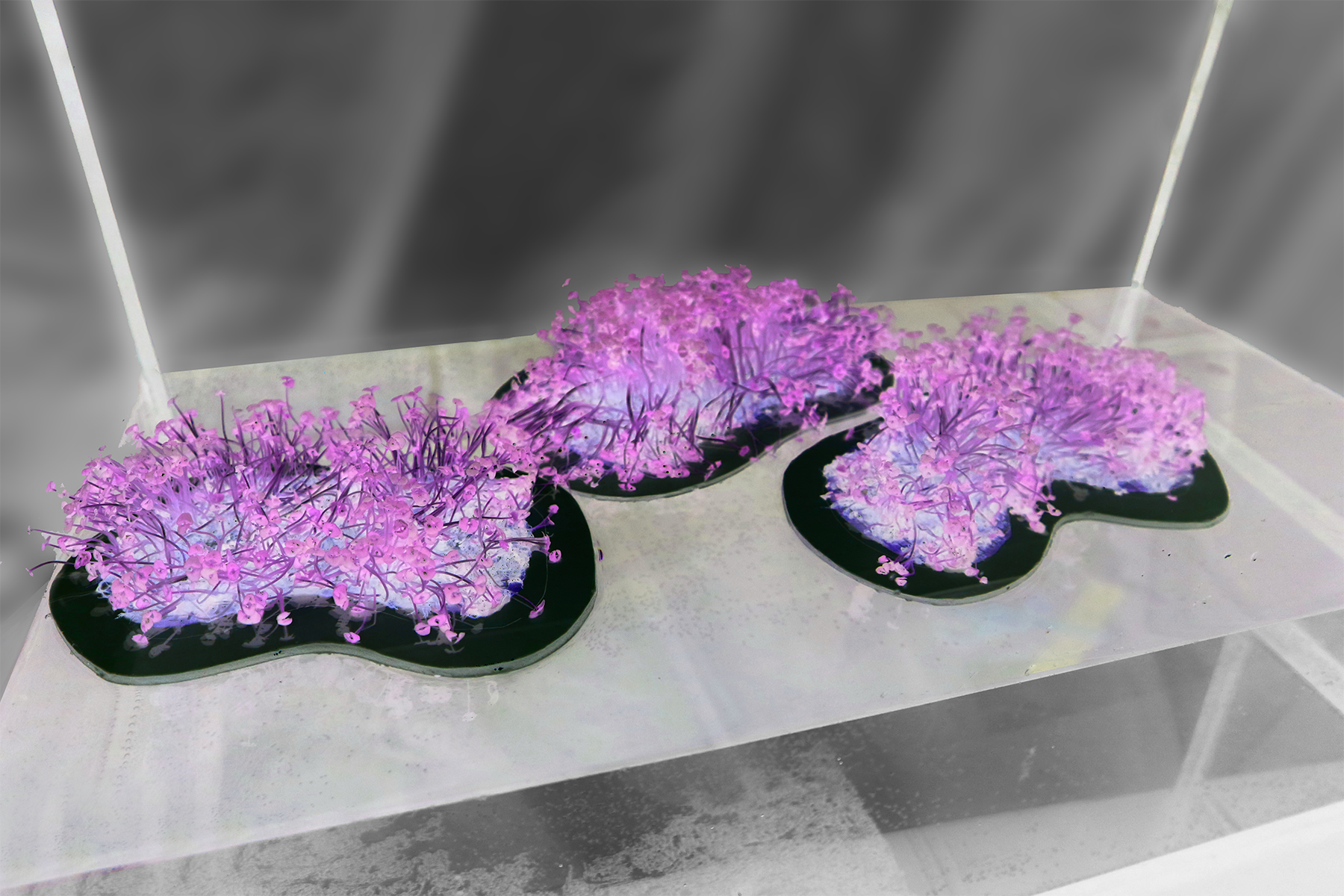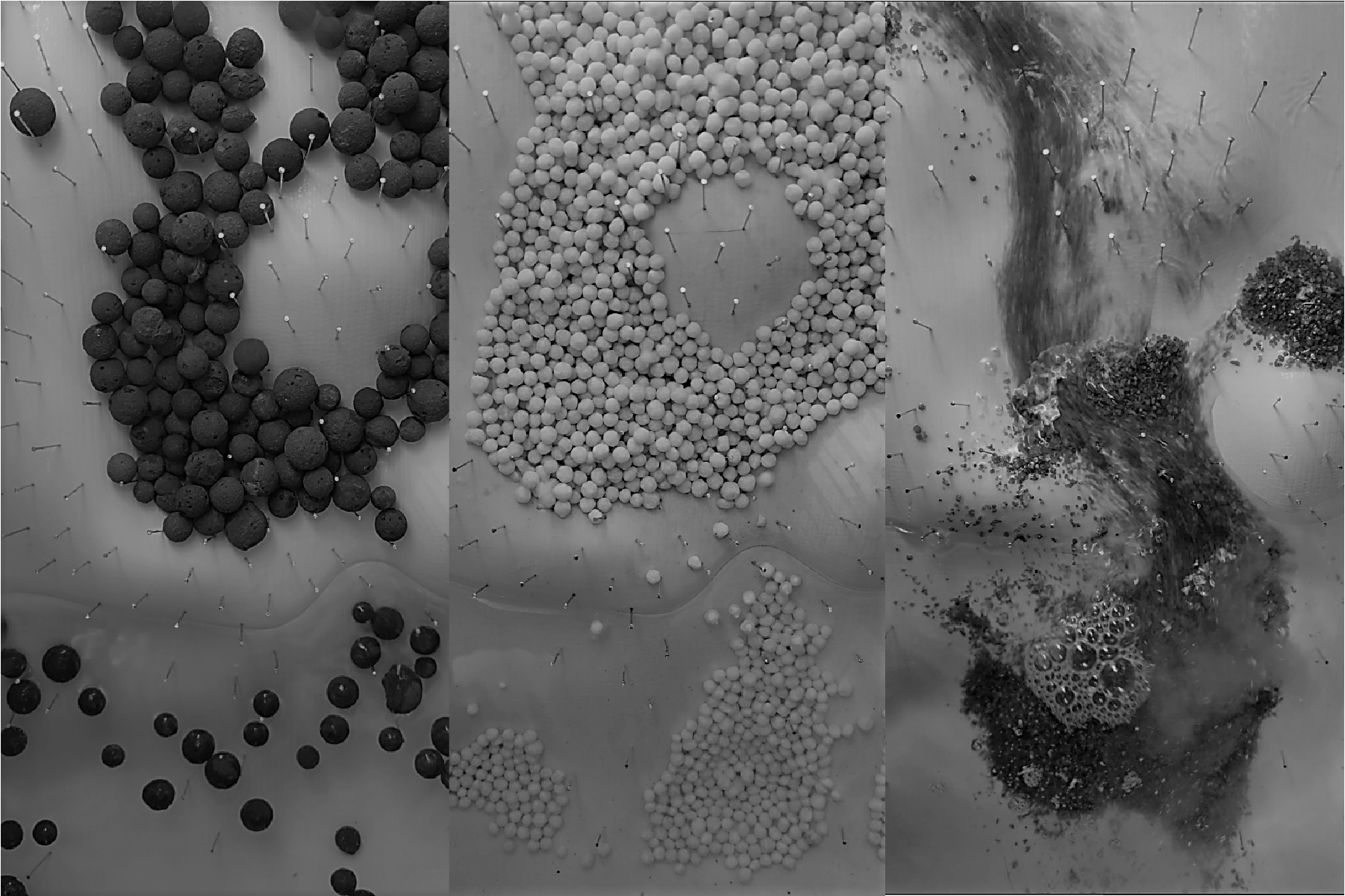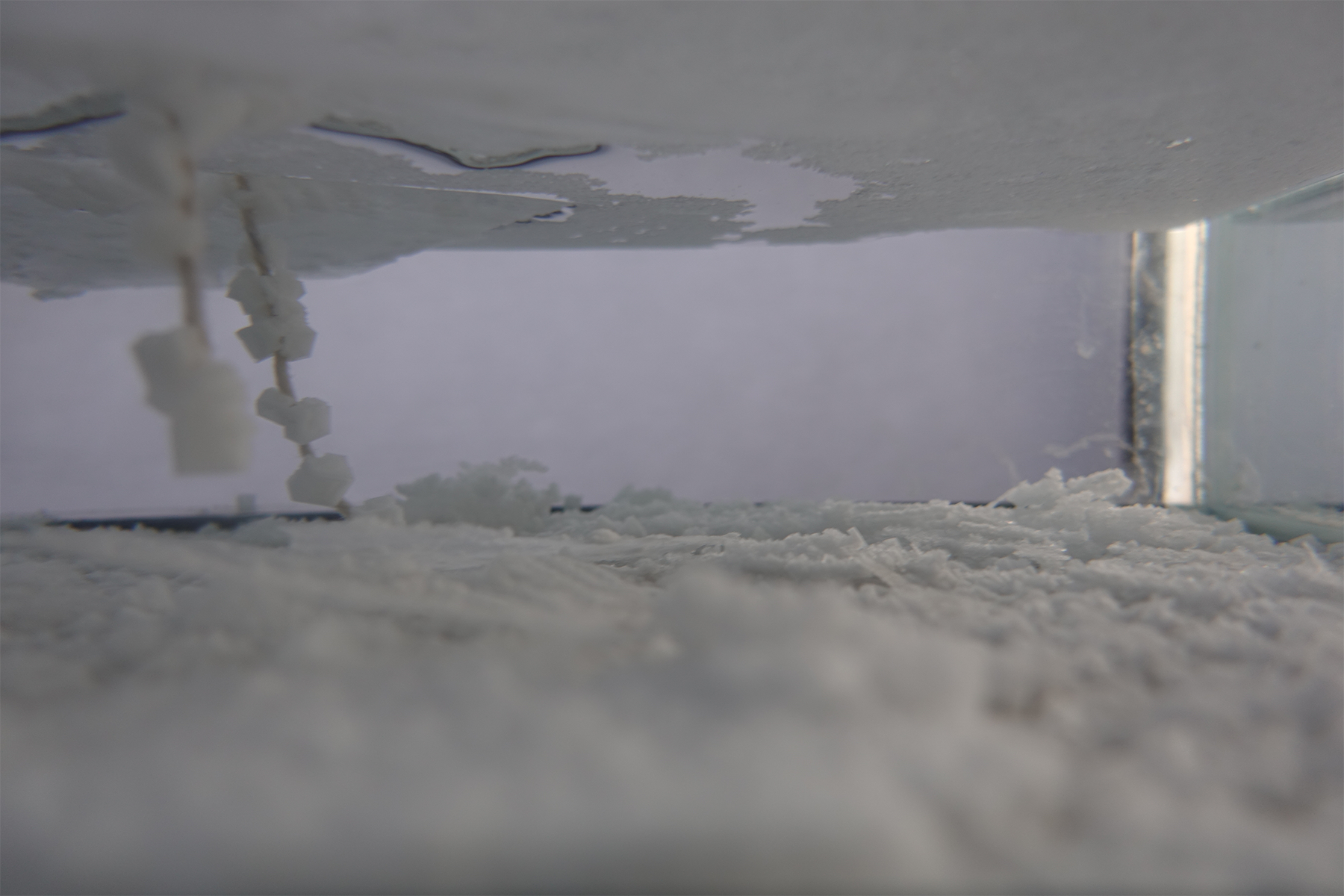Isabel Serna-Moll
Tank Worlds : Hamilton Harbour
Bubble Biofiltration
This project uses an architectural language of bubbles and mechanisms of filtration to remediate Hamilton Harbour. The harbour is contaminated by heavy metals, pcbs, sewage waste overflow, e.coli bacteria, and microplastics. This project uses bioremediation by microorganisms and plants to filter out and breakdown contaminants in the harbour near the Stelco steel mills and adjacent sewage waste outflow points. A series of ‘bubble filters’ and floating micro-plastic-filtering buoys occupy the most contaminated areas of the site. Floating raft platforms enable algae farming , and invite the community to observe the remediation process. A pump station, informed by earlier ‘bubble’ model studies and taken the inspiration of the architectural glasswork of El Ultimo Grito, sits adjacent to the steel mills. Inside the bubble structure, microorganisms filter contaminated waters. Near the steel mills, open and closed ponds enable further algae cultivation; algae both filters water and acts as compost for brownfield remediation.

Phase 1 bubble filter study models to develop underwater in a tank world

Hamilton Harbour in 1962

Site plan showing proposal and research of contamination

Site section side left

Hamilton Harbour in 1938

Hamilton Harbour in 1988

Buoy microplastic and floating wetlands

Site section side right, cuts through Stelco Mill

